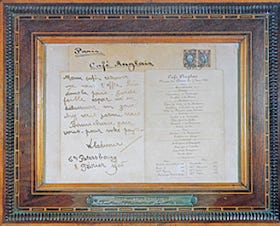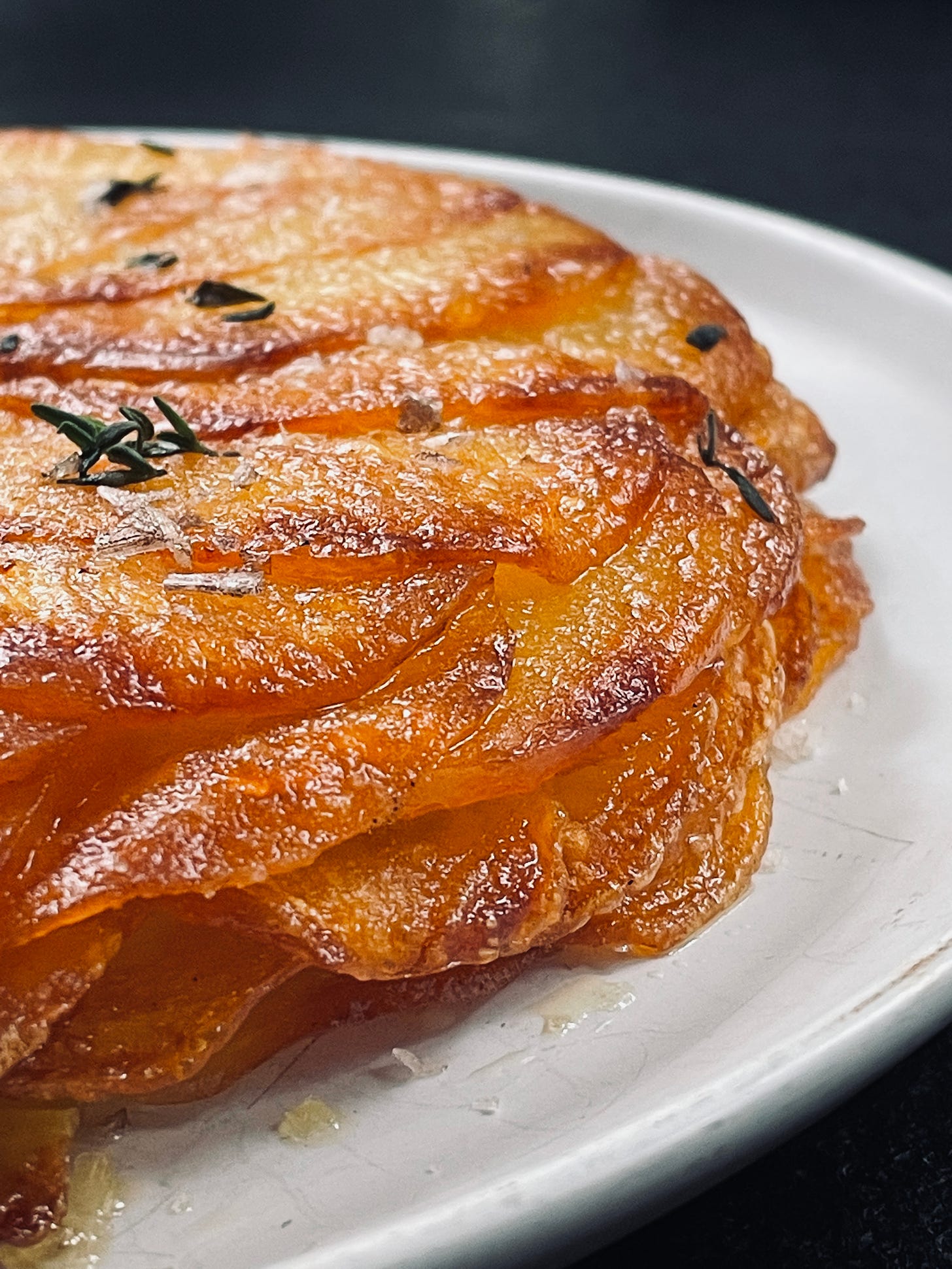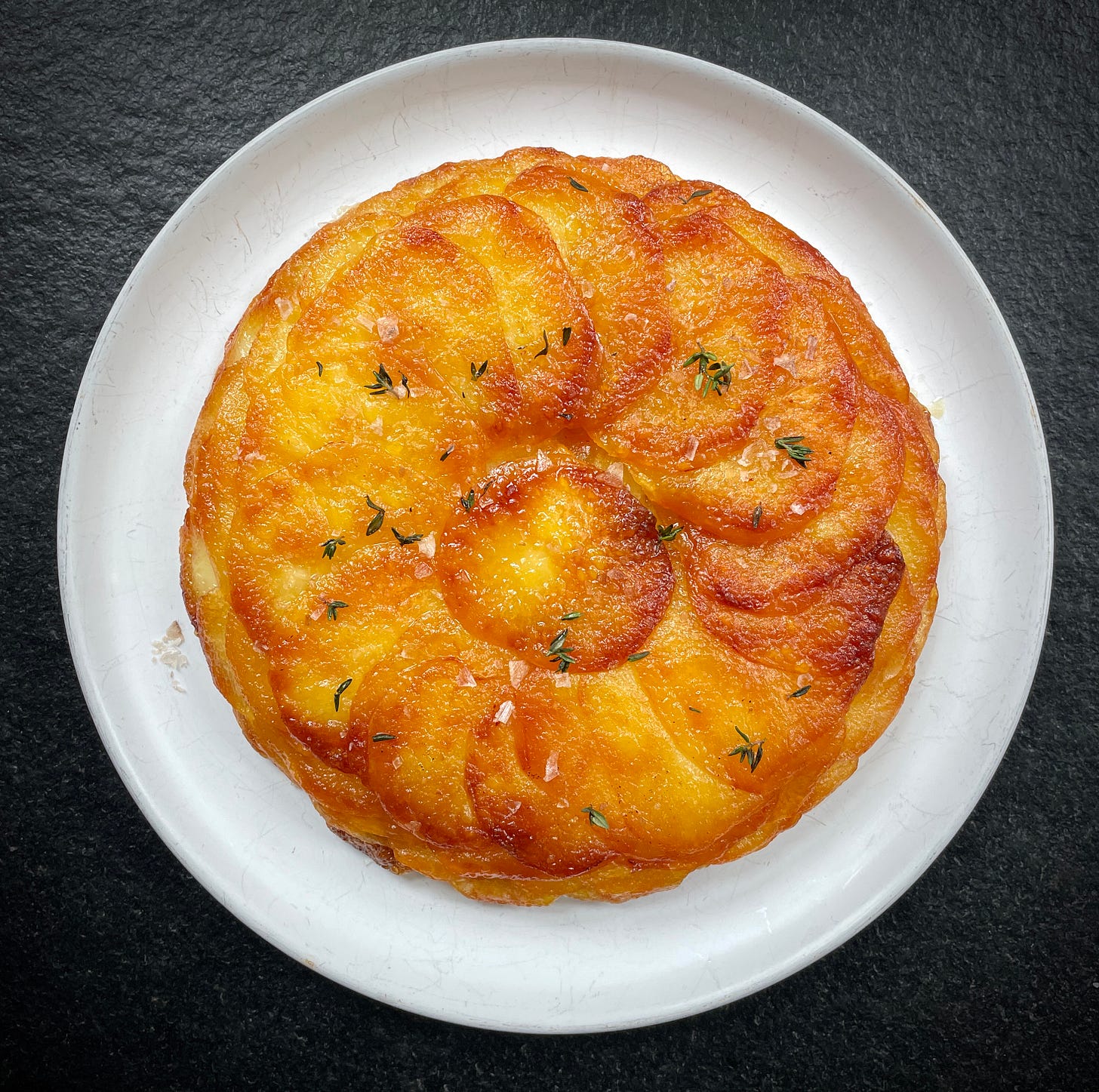Adolphe Dugléré, a pupil of Carême, private chef to the Rothschilds, inventor of many of the most outrageous of the classical French dishes, most notably for me the Pommes Anna.
He also loved tomatoes, it is said. Now if I wore a hat, then I would certainly doff it to him.
He most certainly knew his craft. Taught by Carême, he became Head Chef of Le café Anglais in Paris in 1866 after feeding the Rothschilds as their chef for over two decades; the following year he would cook the ‘Dîner des trois empereurs’ a culinary feat that would nigh on be impossible to recreate ever again, an eight-hour banquet of around sixteen courses that reportedly cost around nine thousand pounds a head in today’s money. It was attempted again a few years back, though most of the wines are long gone now, vintages of fine Bordeaux from the mid-nineteenth century, madeira and sherry from nearly one hundred years earlier.
The only complaint it is said, came at one o’clock in the morning from Tsar Alexander II who was disappointed that there was no foie gras on the menu, Dugléré avoided causing further offence by sending his Maître d'hôtel, Claudius Burdell to explain that in France it was uncustomary to serve foie gras in June, which was seemingly deemed acceptable by the Tsar, on the promise that Dugléré would send him a terrine of fattetened liver in the autumn.
Crunchy
Dugléré was also the man who invented, what is regarded by cooks to be the finest potato dish of all time, Pommes Anna.
A round crispy thick galette, constructed in simple layers of russet potatoes and butter, seasoned with salt, each concentric covering of potato, brushed with a great deal of clarified butter. It should be at least eight layers thick, then cooked to a thick golden crunch.
You’ll see that many recipes call for the pan to be turned upside down every ten minutes, inverting top to bottom, though I believe this is unnecessary and likely the recipe that suggests this has not been tested, as covering yourself in scalding hot butter isn’t the greatest idea of fun, even for those who are oblivious to burns.
Like turning out a tarte tatin too early.
Just silly really.
Far too messy.
Now if you were clearly mad and enjoyed pouring hot butter down your arms and had too much money to spend, you could go to one of London’s high-end cookshops and buy yourself a copper cocotte, designed for the sole purpose of cooking Pommes Anna. You also might find that they would like to charge you nearly seven hundred pounds for the privilege of owning such a pot, telling you that it could also be used for all sorts of other things, as a justification for the obscene price tag.
Annoyingly they couldn’t tell me what sort of things though, or perhaps I should say embarrassingly.
Just ‘all sorts of things’.
And despite Mauviel in France who are the makers of these beautiful copper pots selling them for a lot less, even when considering the exchange rate from Euros.
And Mauviel don’t lie and tell you that you can also use it for all sorts of other things, when it is designed solely for that purpose only. They are very beautiful, are comprised of two parts, a pan on the top and one on the bottom and will allow you to turn it upside down with ease, though I don’t believe this is necessary. Dugléré did though and I respect that. And if I did have a copper cocotte as he probably did, then I would most likely spend days just simply admiring it.
If you’d like to make a Pommes Anna that looks like mine, and one which I believe would please Dugléré, then you could simply use a heavy sauté pan and not waste hundreds of pounds. You also won’t need to cover yourself in hot dripping butter as it doesn’t need to be inverted at all, except when turning it out after it’s cooked.
I suspect Dugléré might disagree with my method, but happily, he’s not here to berate me for bastardising his recipe, though if that is the case he is most certainly welcome to come and haunt me.
And that might actually be considered an honour. Like a haunted version of Ratatouille.
Pommes Anna, a tribute to Adolphe Dugléré
You’ll need about an hour or so, some butter, floury potatoes, some salt and that’s about it.
Equipment-wise, you will need a mandolin and a sauté pan and a piece of foil.
You could do without a mandolin if indeed you have a very sharp knife and a steady hand and you are able to slice potatoes into equal three-millimetre slices.
I have both the temerity and sharp knives for exactly such a task, but even I would use a mandolin as firstly it gives a neat, consistent result and secondly, I cut myself quite neatly yesterday, taking a piece of the tip of my thumb off, whilst cutting a pear of all things. So the fiercely dangerous mandolin is actually preferable, whilst my thumb heals.
I shall add the cut thumb incident to the unfinished essay in my drafts on kitchen injuries, which certainly won’t be for the faint-hearted, but should make the chefs who read these newsletters laugh at the nostalgia at least.
Anyway.
How to
Keep reading with a 7-day free trial
Subscribe to A Private Chef to keep reading this post and get 7 days of free access to the full post archives.






